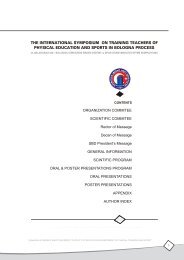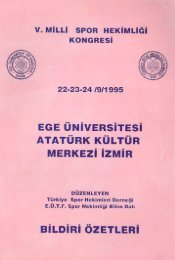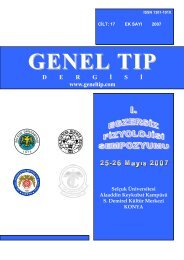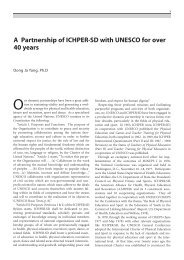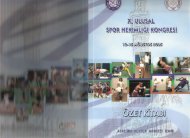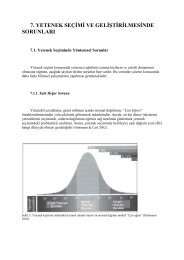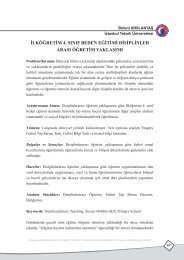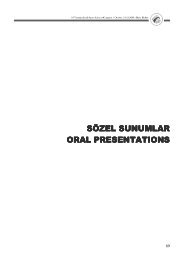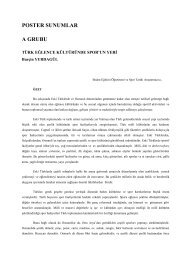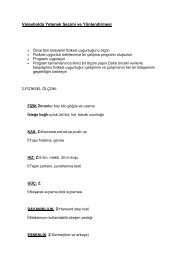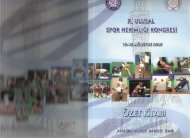KARDÄ°YORESPÄ°RATUVAR EGZERSÄ°Z TESTLERÄ° ... - Spor Bilim
KARDÄ°YORESPÄ°RATUVAR EGZERSÄ°Z TESTLERÄ° ... - Spor Bilim
KARDÄ°YORESPÄ°RATUVAR EGZERSÄ°Z TESTLERÄ° ... - Spor Bilim
You also want an ePaper? Increase the reach of your titles
YUMPU automatically turns print PDFs into web optimized ePapers that Google loves.
7.ULUSLARARASI SPOR BİLİMLERİ KONGRESİ27-29 EKİM 2002KONGRE - PANELLERPHYSIOLOGICAL DEMANDS IN SOCCER PLAYThomas ReillyLiverpool John Moores University, Research Institute for <strong>Spor</strong>t and Exercise Sciences, Liverpool, UK.1. IntroductionThe physiological demands of soccer play are indicated by the exercise intensities at which the manydifferent activities during match-play are performed. There are implications not only for fitness assessment andselection of players but also for their training regimes. Since the training and competitive schedules of playerscomprise their occupational roles, there are consequences too for their habitual activities, daily energyrequirements and energy expenditures. Finally, there are repercussions for the prevention of injuries as far asis possible.A scheme for an ergonomics approach to studying football is illustrated in Figure 1. A lot depends on thecompatibility between the games‘ demands and the players‘ capabilities. This model demonstrates the choicesopen to the coach for combining selection and training criteria.Demands of the gameFitness of playersSelectionTrainingFigure 1. Model of an ergonomics approach towards analysing football.3542. Analysis of Work-rateThe exercise intensity during competitive soccer can be indicated by the overall distance covered. Thisrepresents a global measure of work-rate which can be broken down into the discrete actions of an individualplayer for a whole game. The actions or activities can be classified according to type, intensity (or quality),duration (or distance) and frequency. The activity may be juxtaposed on a time-base so that the averageexercise-to-rest ratios can be calculated. These ratios can then be used in physiological studies designed torepresent the demands of soccer and also in conditioning elements of the soccer players‘ training programmes.These work-rate profiles can be complemented by monitoring physiological responses where possible.Overall, it is possible to characterise the average requirements of football match-play (see Table 1). Themean values mask the acyclical nature of the intermittent exercise bouts that are observed. For example,intense bouts of exercise in succession may not allow for full recovery in between. Besides, the players may



